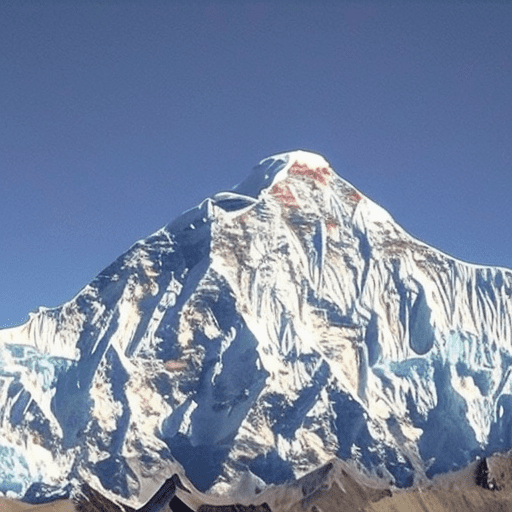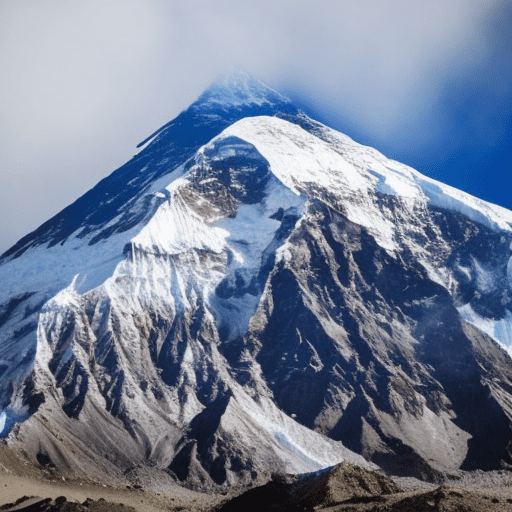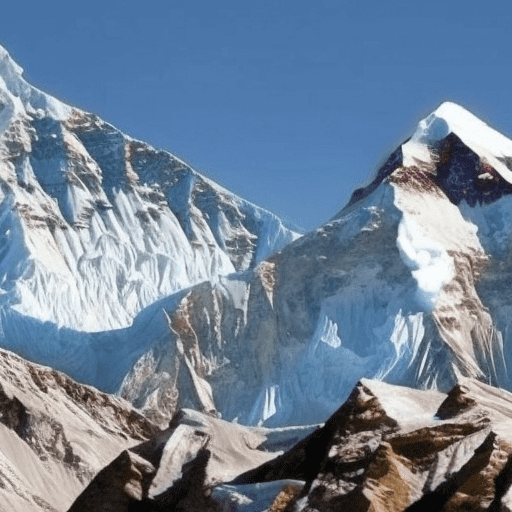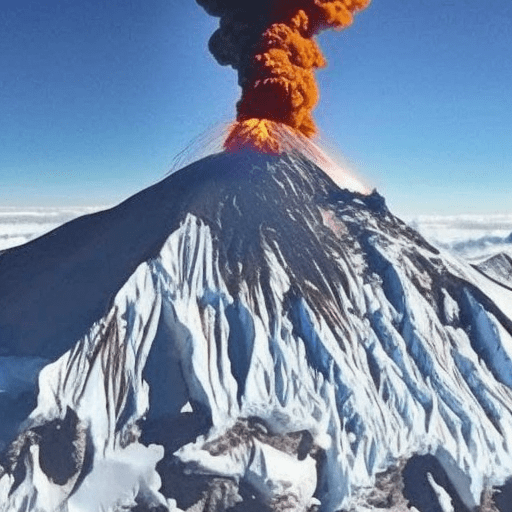Is Mount Everest a volcano?
- Some say that because it does not have traditional volcanic features, it cannot be classified as a volcano.
- However, others argue that the term “mountain” does not necessarily refer to a landform with volcanic activity.
The truth is that Mount Everest has both mountains and volcanoes in its makeup!
Let’s explore the history of Mount Everest and determine whether or not it is actually a volcano.
No, Mount Everest is not a volcano, it is a mountain.

Mount Everest is not a volcano. Here are 7 facts that explain why:
- Mount Everest is located in the Himalayas mountain range, which was formed by the collision of the Indian and Eurasian tectonic plates. It did not form from volcanic activity.
- The rocks that form Mount Everest are marine limestones, marbles, and schists. Volcanic rock is not found on the mountain.
- Mount Everest sits on the border between India and Nepal. The nearest volcanic area is over 400 miles away.
- Mount Everest continues to gain a few millimeters in height each year due to the pressure from two converging tectonic plates. This is not a volcanic process.
- The summit does not feature a crater, volcanic vents, or fumaroles (gas vents) as would be expected on a volcano.
- While earthquakes are frequent in the area due to tectonic activity, the tremors are not caused by magma churning as with live volcanoes.
- Mount Everest has never erupted lava, ash, or volcanic gas. Eruptions and lava flows have never been recorded.
So while immense in height, Mount Everest was formed by geological uplift processes over millions of years, not by volcanic activity.
It sits too far from active magma sources to be categorized as a volcano.
Explain it to a child

Mount Everest is not a volcano. It is the highest mountain in the world. The mountain is in the Himalayan mountains. Two of Earth’s tectonic plates hit each other and made the rock go up to create Mount Everest.
Volcanoes are mountains that have erupted in the past and have deposited ash and other volcanic materials on their slopes. The summit of Mount Everest is not made of ash or other volcanic materials but of solid granite.
Is Mount Everest a volcano?
Mount Everest is not a volcano.
It is the highest mountain peak in the world, located in the Himalayan mountain range.
The mountain was formed when two of the Earth’s tectonic plates collided, thrusting up the rock and creating the towering peak.
- Although there is evidence of past volcanic activity in the area, Mount Everest itself is not a volcano.
- Today, the mountain is home to a variety of wildlife, including snow leopards, red pandas, and many species of birds.
- Visitors to Mount Everest can trek to its base camp or even attempt to summit the peak.
However, due to its altitude and challenging terrain, Everest remains one of the most dangerous mountains to climb.
Is there a volcano on Mount Everest?

Many people are surprised to learn that there is no volcano on Mount Everest.
The mountain was formed by the collision of two tectonic plates, which caused the rock to buckle and rise up over time.
- Although there are volcanoes nearby, Mount Everest itself is not volcanic.
- As a result, it is not at risk of erupting, and climbers can rest assured that they will not be caught in any lava flows!
What are the history of Mount Everest and its relation to volcanoes?
Mount Everest is the tallest mountain in the world, and its peak stands nearly 29,000 feet above sea level.

The mountain is located in the Himalayan range, which runs across Nepal and Tibet.
Mount Everest has formed over 60 million years ago when two landmasses collided, thrusting up huge mountains.
- The Himalayas are still growing today, rising an average of about a millimeter each year.
- Despite its height, Mount Everest is not actually the tallest mountain when measured from base to peak.
- That distinction belongs to Mauna Kea in Hawaii, which extends nearly 10,000 feet below the surface of the Pacific Ocean.
Mount Everest’s prominence, however, comes from its height above sea level, which makes it the tallest mountain in the world.
The mountain has been a popular destination for climbers since the early 20th century and is now visited by thousands of people each year.
While most climbers today use modern equipment and techniques, Mount Everest remains a challenging and deadly climb.
Dozens of people die on the mountain every year, making it one of the most dangerous places in the world.
Despite the risks, people are drawn to Mount Everest by its beauty and by the sense of accomplishment that comes with reaching its summit.
Is a volcanic eruption at Mount Everest possible?
Everest is actually a mass of granite that was pushed up during the collision of two tectonic plates.

- Over the millennia, erosion has worn away the surrounding rock, leaving the giant peak that we see today.
- While there are volcanoes in the region, they are all located several hundred miles away from Mount Everest.
As a result, an eruption at Mount Everest is not considered to be possible.
If Mount Everest is a volcano, how would it erupt and how dangerous will the eruption be?
Mount Everest is not a volcano, but it is still possible for the mountain to erupt.
- If the conditions are right, molten rock could break through the surface, causing an explosive eruption.
- The resulting ash cloud would be devastating to nearby villages and towns, and the flowing lava would pose a significant threat to climbers on the mountain.
However, it is unlikely that an eruption of this magnitude will occur in the near future.
The last major eruption of Mount Everest occurred millions of years ago, and the mountain has been largely inactive since then.
As a result, any eruption that does occur is likely to be small and pose little danger to people or property.
So, while it is possible that Mount Everest will erupt in the future, it is not currently a volcano.
Article Sources
Jacks of Science sources the most authoritative, trustworthy, and highly recognized institutions for our article research. Learn more about our Editorial Teams process and diligence in verifying the accuracy of every article we publish.
